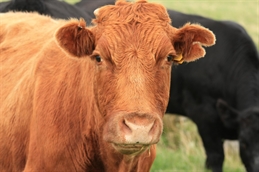
Following the successful conclusion of the China-Australia Free Trade Agreement (ChAFTA) in November 2014, tariffs on live animal exports from Australia to China will be eliminated within four years. Agreement still needs to be reached on lifting restrictions on cattle from areas affected by Bluetongue virus (BTV) and on the animal welfare protocol to be adopted.
China is Australia’s second largest market for live animals, worth A$142 million (US$110 million) in 2013. Pure-bred cattle currently dominate Australia’s live animal exports, worth A$136 million (US$105 million) in 2013.
Prior to ChaFTA, there was already no tariff on pure-bred breeding beef imports into China. However, the tariff for other types of cattle including feeder and slaughter ranged from 10-30%. Currently, the tariff into China on Australian cattle is 24.3%, whereas the tariff on New Zealand cattle has been reduced to 13% following the free trade agreement between China and New Zealand.
Under ChAFTA, the tariff on all live animals will be eliminated within four years. This will gradually remove the disadvantage faced by Australian farmers relative to their New Zealand competitors.
Bluetongue Protocol a Historic Barrier to Cattle Exports
A major sticking point for livestock export to China has been China’s refusal of cattle from areas affected by the Bluetongue virus.
The most recent slaughter and feeder cattle protocol between Australia and China was signed in 1998. The protocol only allowed the import of beef cattle into China from outside the Bluetongue zone. This means that cattle within the northern Australian “possible transmission” Bluetongue zone – which includes the top section of Australia north of a line from Broome to Sydney – are currently prohibited from entering China.
On a positive note, the Bluetongue-free zone in the Northern Territory was significantly expanded in 2013. An estimated 18 additional cattle stations are now within the free zone. Moving forward to a successful livestock trade with China, there needs to be government-to-government level cooperation on a new health protocol that will enable as many cattle as possible from as many areas in Australia as possible to be eligible to be exported to China.
There have been recent talks to ease the current restrictions. Last year the Northern Territory Minister for Primary Industry and Fisheries visited China and discussed the BTV issue with Chinese officials from the national quarantine agency, AQSIQ. There is an expectation that China will soon remove its quarantine ruling to accept cattle from the BTV zone.
While Bluetongue remains a key issue, it is only one of numerous issues that must be agreed upon before the two countries can finalize a mutually-workable protocol for the live feeder and slaughter cattle trade.
In 2011, the Department of Agriculture, Fisheries and Forestry (DAFF) introduced the Exporter Supply Chain Assurance Scheme (ESCAS), which applies to export of feeder or slaughter livestock. Under the new scheme, exporters must have control of all supply chain arrangements for livestock transport, management and slaughter. Exporters need to be able to trace all livestock through the supply chain and the supply chain in the importing country needs to be independently audited.
Failure of a licensed exporter to comply with the approved ESCAS could result in a range of compliance measures and sanctions, including non-approval of future applications and revocation of the licence to export livestock.
The introduction of the new scheme will increase the costs of exporting Australian cattle, because it requires commercial adoption of the strict requirements under the scheme by Chinese abattoirs.
Breakthrough on Federal Level Negotiation
The Australian federal government has been making significant ongoing efforts in working and negotiating with the Chinese government towards reaching new export protocols for slaughter and feeder cattle.
The latest visit to Australia by a Chinese delegation in November 2014 is seen to be an important step towards establishing the trade. Agriculture minister Barnaby Joyce said that Australia was on the cusp of securing a “breakthrough” live cattle deal with China worth up to A$1 billion (US$771 million) a year. It was also indicated that both the Bluetongue issue and the ESCAS process have been addressed in detail.
Selling live cattle to China was a major talking point at last year’s Northern Australia Beef Industry Roundtable in June. The agriculture ministers for Queensland, Western Australia and the Northern Territory were told on several occasions that the government should be doing all it can to help the cattle industry’s push into the lucrative Chinese market.
In April last year, a memorandum of understanding (MOU) was signed between Western Australian live exporters and Chinese company representatives. Under the agreement, parties have agreed to work towards animal health and welfare protocols for cattle from Western Australia. Exporters known to have signed the agreement include the Western Australia Live Exports Association and the Australian Livestock Exports.
Last year, a similar MOU was signed between Western Australia and Zhejiang province, Western Australia’s sister province in eastern China.
By Jacqui Song, Rhett Oliver and Brendan Maier
CBP Lawyers | Sydney
About the authors
Rhett Oliver is a partner in the property and development team at CBP Lawyers in Brisbane. He has over 10 years experience in all forms of transactional work involving property and development and extensive experience in corporate law. He has worked for clients on matters involving commercial and residential construction, projects and infrastructure. He also has experience in equine law including syndications, sales, risk advice, breeding and training.
Brendan Maier is a partner in the property and development team at CBP Lawyers in Sydney. He has practical experience in the property and finance industry, having previously worked as in-house legal counsel for one of Australia’s largest property developers. He advises on a range of transactions including site acquisition and disposal, development agreements, finance and syndication arrangements, environmental remediation, leases, hotel and serviced apartments, contractual disputes and “off the plan” sales.



